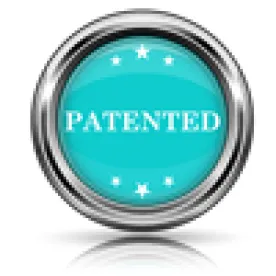Patent holders and accused infringers will need to continue being creative in drafting license agreements after the Supreme Court’s recent decision in Kimble v. Marvel, No. 13-720, 2015 U.S. Dist. LEXIS 4067, at *6 (June 22, 2015). Kimble upholds the prohibition on charging royalties for use of a patented invention after the patent expires. The rule originated in Brulotte v. Thys Co., 379 U.S. 29 (1964), and has been criticized for restricting the ability of patent holders and potential licensees to reach mutually agreeable terms after arms-length negotiations.
The story in this case is that, in 1990, Stephen Kimble patented a toy glove that allows the wearer to spew “webs” (pressurized foam string) from his or her palm. Looking to commercialize the patent, Kimble met with Marvel’s corporate predecessor (owner of all things Spider-Man) but the parties did not reach an agreement. After the meeting, the company began to market the “Web Blaster,” a Spider-Man toy that uses a glove and pressurized foam to shoot webs from the wearer’s hand. Kimble sued and the parties eventually settled. As part of the settlement, Marvel agreed to buy Kimble’s patent for a lump sum and pay a 3% royalty on all future sales of the Web Blaster; no end date was set. Neither party knew about Brulotte when they settled. But when Marvel discovered Brulotte, the company sought a declaratory judgment that it could stop making royalty payments when the patent expired in 2010. The district court granted the declaratory judgment, and the Ninth Circuit, despite criticizing Brulotte as “counterintuitive” and “unconvincing,” affirmed.
While acknowledging criticism of Brulotte, Justice Kagan, writing for the majority, cites stare decisis and the particular need for decisions about contract and property law to remain settled “because parties are especially likely to rely on such precedents when ordering their affairs.” Further, the majority defends Brulotte as part of a line of cases in which the Court guards the balance struck by Congress “between fostering innovation and ensuring public access to discoveries.” Royalties, in the view of the Court, are part of the temporary monopoly granted patent holders and therefore may only be charged during the patent term. As Justice Kagan writes, “when the patent expires, the patentee’s prerogatives expire too, and the right to make or use the article, free from all restriction, passes to the public.”
However, as the Court points out, “parties can often find ways around Brulotte.”
The opinion even helpfully describes a few:
-
Payments for pre-expiration use of the patented invention can be deferred into the post-expiration period.
-
Agreements covering multiple patents allow royalties to continue until expiration of the latest-running patent.
-
Royalties for non-patent rights can also run past the patent expiration date, even where the right is closely related to a patent.
-
Business arrangements that do not involve royalties are not affected in any way by Brulotte or Kimble.
Therefore, while the Court declined an opportunity to overturn Brulotte, creative parties should still be able to craft the arrangement they desire, and one that aligns with economic reality. But just remember, even though Justice Kagan likened patent rights to “superpowers,” patent holders would be well-advised to use those powers for good, because they all become mere mortals after the twenty year term expires.




 />i
/>i
